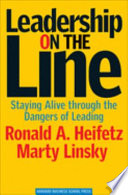

Leadership is fundamentally about influence and the ability to navigate through complex social dynamics. The authors, Ronald A. Heifetz and Marty Linsky, emphasize that leaders must be aware of the challenges they face, which often include resistance to change and the emotional toll it takes on both leaders and followers. They argue that effective leadership is not just about making decisions but also about fostering a culture of trust and collaboration. Leaders must be willing to step into the 'danger zone' where they confront the fears and anxieties of their followers while maintaining their own emotional balance. This requires a nuanced understanding of human behavior and the ability to engage in difficult conversations, making it essential for leaders to develop emotional intelligence and resilience.
Continue readingThe concept of adaptive leadership is central to the book. Heifetz and Linsky discuss how leaders must not only provide direction but also help their organizations adapt to changing environments. This involves distinguishing between technical problems, which can be solved with existing knowledge, and adaptive challenges, which require new learning and innovation. Leaders must encourage their teams to face these challenges head-on, fostering a culture where experimentation and learning from failure are valued. This adaptive approach is crucial in today's fast-paced, ever-changing world, where traditional solutions may not suffice. Leaders are urged to create an environment where people feel safe to take risks and explore new ideas, thus driving organizational growth.
Continue readingHeifetz and Linsky highlight the distinction between authority and influence. While authority comes from a formal position, influence is earned through trust and respect. Leaders must recognize that their position does not automatically grant them the ability to lead effectively. They need to cultivate influence by demonstrating competence, integrity, and commitment to the organization's mission. This involves building relationships and engaging with followers on a personal level. The authors argue that effective leaders are those who can inspire others to take ownership of their roles and contribute to the collective goals of the organization. By fostering a sense of shared purpose, leaders can enhance their influence and drive positive change.
Continue readingResistance is a natural response to change, and leaders must learn to navigate this resistance skillfully. Heifetz and Linsky provide strategies for managing pushback, emphasizing the importance of listening to concerns and validating emotions. They argue that leaders should not shy away from conflict but instead engage with it constructively. By addressing the fears and anxieties of their followers, leaders can help them move through resistance and embrace change. This requires patience and a willingness to invest time in understanding the perspectives of others. The authors also stress the importance of maintaining a clear vision and communicating it effectively, as this can help alleviate fears and build support for new initiatives.
Continue readingThe authors assert that leadership plays a crucial role in shaping organizational culture. They argue that leaders must be intentional about the values and norms they promote within their organizations. This involves modeling the behavior they wish to see in others and creating systems that reinforce desired cultural attributes. Heifetz and Linsky emphasize that a strong organizational culture can enhance resilience and adaptability, enabling teams to navigate challenges more effectively. Leaders are encouraged to engage in ongoing dialogue about culture and to solicit input from team members, ensuring that everyone feels a sense of ownership in the cultural evolution of the organization.
Continue readingLeadership can be an emotionally taxing role, and the authors stress the importance of self-care for leaders. Heifetz and Linsky highlight that leaders must be aware of their own emotional states and take steps to manage stress and maintain their well-being. This includes seeking support from peers, engaging in reflective practices, and setting boundaries to prevent burnout. The authors argue that leaders who prioritize their own health and well-being are better equipped to support their teams and navigate the complexities of leadership. By modeling self-care, leaders can also encourage their followers to prioritize their own well-being, fostering a healthier organizational environment.
Continue readingFinally, the authors emphasize that effective leadership requires courage. Leaders must be willing to take risks, confront difficult truths, and make tough decisions, even in the face of opposition. Heifetz and Linsky argue that courage is not the absence of fear but the ability to act despite it. Leaders are encouraged to embrace their vulnerabilities and acknowledge their limitations, as this authenticity can strengthen their connection with followers. The authors believe that cultivating courage is essential for leaders to inspire others and drive meaningful change within their organizations.
Continue reading